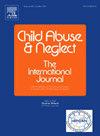德国新教背景下的修饰策略:幸存者经验的定性分析
IF 3.4
2区 心理学
Q1 FAMILY STUDIES
引用次数: 0
摘要
未成年人性虐待(SA)是一个持续存在的全球性问题。分析可能的梳理策略可能有助于预防SA。虽然宗教机构中未成年人的SA一直是一个主要的研究课题,但在德国和世界范围内,关于新教环境的研究很少。目的分析德国新教背景下的仪容整洁策略。参与者和环境对30名报告在德国新教环境中经历过SA的人进行了半结构化访谈。方法采用演绎归纳法进行定性含量分析。结果梳理策略分为9个主要梳理类别和1个附加的总体类别,标志着宗教观念在梳理中的使用:(1)建立良好的声誉,(2)利用接触(弱势)人的机会,(3)创造一对一接触的机会,(4)孤立儿童/青少年,(5)建立信任和依赖,(6)脱敏感性(慢慢突破界限),(7)直接防止披露和(法律)后果,(8)使用权力强制实施SA,(9)制造歧义。本研究加深了对基督教背景下仪容整洁的理解,对新教背景下的仪容整洁提供了独特的结构和详细的分析。它的主题方法突出了重要的仪容整洁策略,使它们在德国和其他地方更加有形和可识别。这些见解为培训教会领袖、同工、家长以及儿童和青少年提供了宝贵的实践指导,加强了防止虐待的保护措施。本文章由计算机程序翻译,如有差异,请以英文原文为准。
Grooming strategies in German Protestant contexts: A qualitative analysis of survivors' experiences
Background
Sexual abuse (SA) of minors is an ongoing global problem. Analyzing possible grooming strategies might help in the prevention of SA. Though SA of minors in religious institutions has been a major research topic, within Germany and worldwide, research regarding Protestant settings is scarce.
Objective
The aim of this study was to analyze grooming strategies in German Protestant settings.
Participants and setting
Semi-structured interviews were conducted with 30 persons who reported having experienced SA in a German Protestant setting.
Methods
Qualitative content analysis was conducted, following a deductive-inductive approach.
Results
Grooming strategies were sorted into nine main grooming categories with subcategories and one additional overarching category, marking the usage of religious concepts for grooming: (1) building a good reputation, (2) utilizing access to (vulnerable) persons, (3) creating opportunities for one-on-one contact, (4) isolating the child/adolescent, (5) building trust and dependencies, (6) desensitizing (slowly pushing boundaries), (7) directly preventing disclosure and (legal) consequences, (8) using power to enforce SA, (9) creating ambiguity.
Conclusions
The present study deepens the understanding of grooming in Christian contexts, offering a uniquely structured and detailed analysis of Protestant settings. Its thematic approach highlights important grooming strategies making them more tangible and recognizable across Germany and beyond. These insights provide valuable practical guidance for training church leaders, staff, parents, as well as children and adolescents, strengthening protective measures against abuse.
求助全文
通过发布文献求助,成功后即可免费获取论文全文。
去求助
来源期刊

Child Abuse & Neglect
Multiple-
CiteScore
7.40
自引率
10.40%
发文量
397
期刊介绍:
Official Publication of the International Society for Prevention of Child Abuse and Neglect. Child Abuse & Neglect The International Journal, provides an international, multidisciplinary forum on all aspects of child abuse and neglect, with special emphasis on prevention and treatment; the scope extends further to all those aspects of life which either favor or hinder child development. While contributions will primarily be from the fields of psychology, psychiatry, social work, medicine, nursing, law enforcement, legislature, education, and anthropology, the Journal encourages the concerned lay individual and child-oriented advocate organizations to contribute.
 求助内容:
求助内容: 应助结果提醒方式:
应助结果提醒方式:


